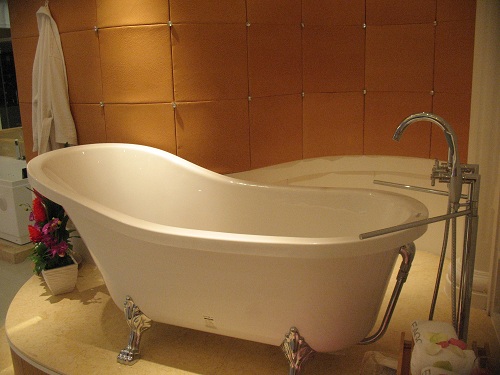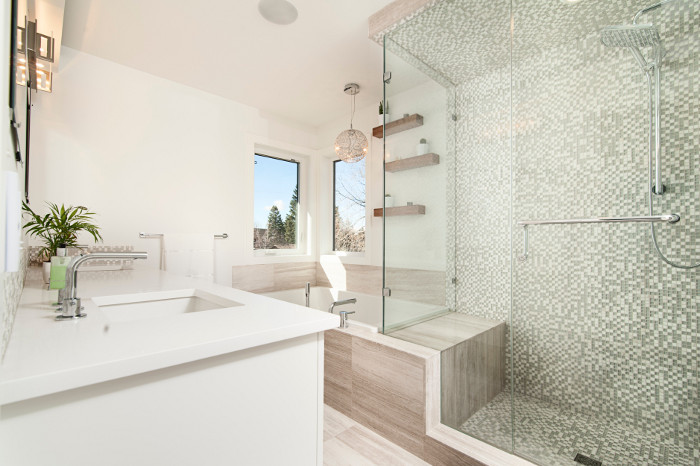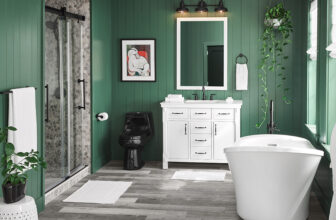
When upgrading a bathroom, one of the major decisions is whether to install a built-in tub or a freestanding bathtub. The answer will depend upon preference; however, there are a few things to consider before making that final decision. Read on for a comparison of the two.
A freestanding tub is one that is completely finished on all sides and can stand alone. It may stand on legs or it could sit directly on the floor. They come in many different designs and will likely be the focal point of the bathroom. The tubs function the same way as a built-in tub. One factor to keep in mind with a freestanding tub, is there is typically no alternative access route, so elderly people or people with disabilities may have trouble getting in and out of them.
A built-in tub is a bathtub that is not finished on all sides. It must be installed against a wall or in a pre-built surround or enclosure. They almost always architecturally flow with the overall bathroom design.
Cost Comparison
In the past, freestanding tubs have been a more expensive option. That is because of the material they were made of. Now though, freestanding tubs are being made of other materials which make them a bit more affordable.
Surrounds and enclosures for a built-in tub can get expensive, compared to no surround needed for a stand-alone tub. The plumbing costs will likely be more expensive for a freestanding bathtub, especially if you are going to put it in a place where no tub existed before.
Required Space Comparison
Typically, built-in tubs require less space. Freestanding tubs require more space around them and they need more space for faucets. Built-in tubs can have the shower feature built into the same space, so this definitely saves space that would be required for a standalone shower. Some freestanding tubs, come with a shower like attachment, but it is truly not the same as a real shower.

Flexibility in Placement
Freestanding tubs win hands down on this issue. Beside they are like a piece of furniture, they can be placed anywhere, even in the middle of the bathroom. Obviously, re-constructing the plumbing is necessary. Built-in tubs need to go in a corner or along a wall.
Storage Accessibility
Freestanding tubs do not offer much in the way of storage accessibility. There are no drawers on the sides where you can store towels, soap, etc. Built-ins on the other hand can be built with these features included. It is possible to add a bathtub tray to a freestanding tub, however, built-in tubs are much better for storage accessibility.
Installation Issues
Freestanding tubs can be extremely heavy. Floor reinforcements may be necessary. The plumbing may also be an issue, depending on where the tub is placed. Built-ins come with their own installation issues, but generally, they are easier to install.
Overall Appeal
Freestanding tubs now come in all shapes and sizes. They can really make your bathroom with their style and appeal, whether you select the vintage claw foot tub or a more modern streamlined tub. However, built-in tubs can be designed with many types of material. They can blend in with or stand out from the rest of the bathroom décor. So, it’s kind of a toss-up on which type has the most overall appeal. Again, it depends on personal preference.
Contributed by: Perfectbath.com
- How to Choose the best bathtubs for Hydrotherapy
- Tips on Repairing Bathtub Leaks
- 3 Tips to Converting a Tub to a Shower
- 3 Benefits of a Whirlpool Bathtub
- How to Keep Your Whirlpool Tub Clean
- 3 Tips for Replacing a Bathtub
- Built-In Bathtubs Vs Freestanding Tubs: How To Choose
- Best Modern Bathtub Designs
- The Different Types of Bathtubs
- The Whirlpool Bath: Spa-Style Bathroom Luxury You Can Afford







